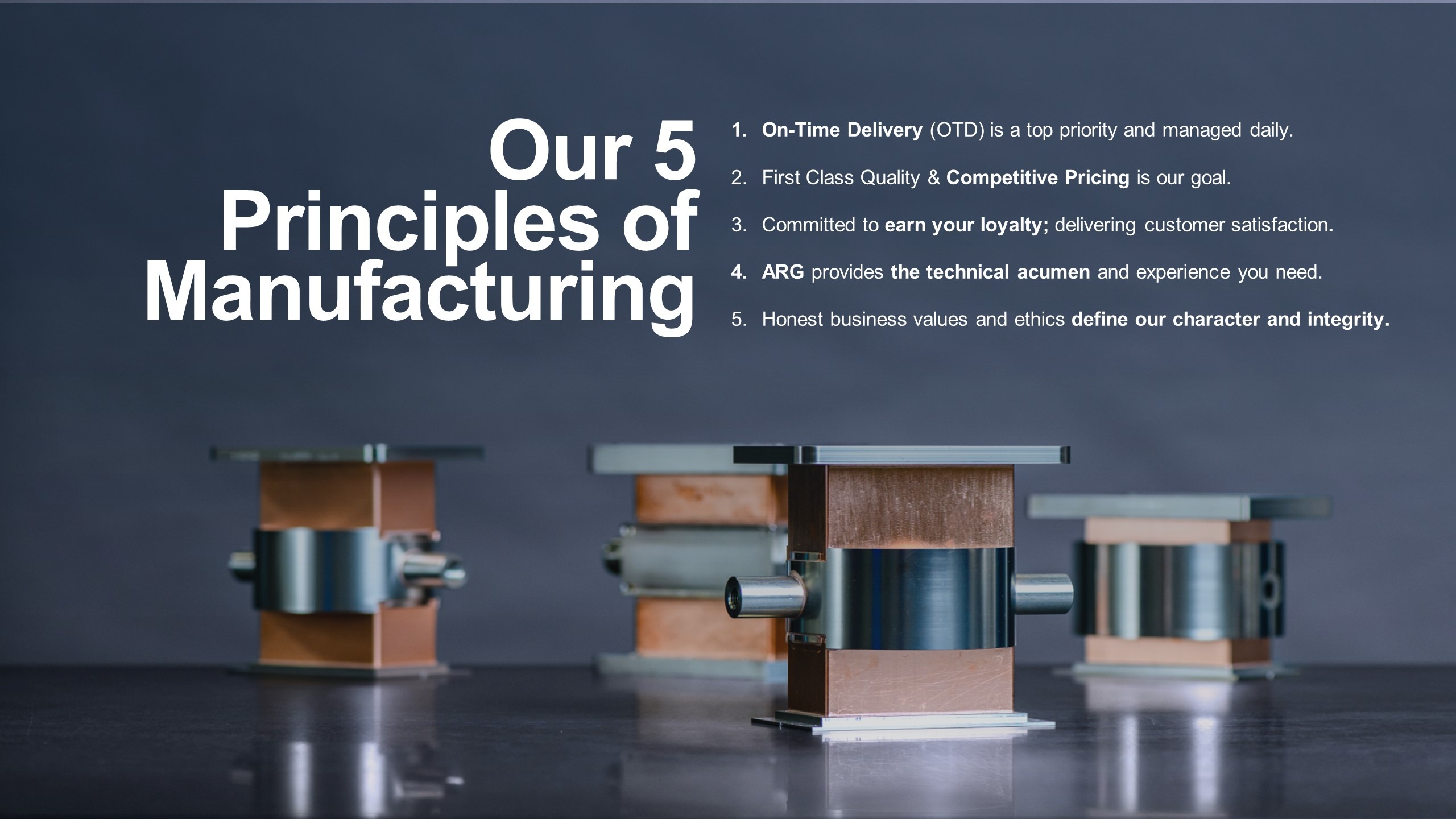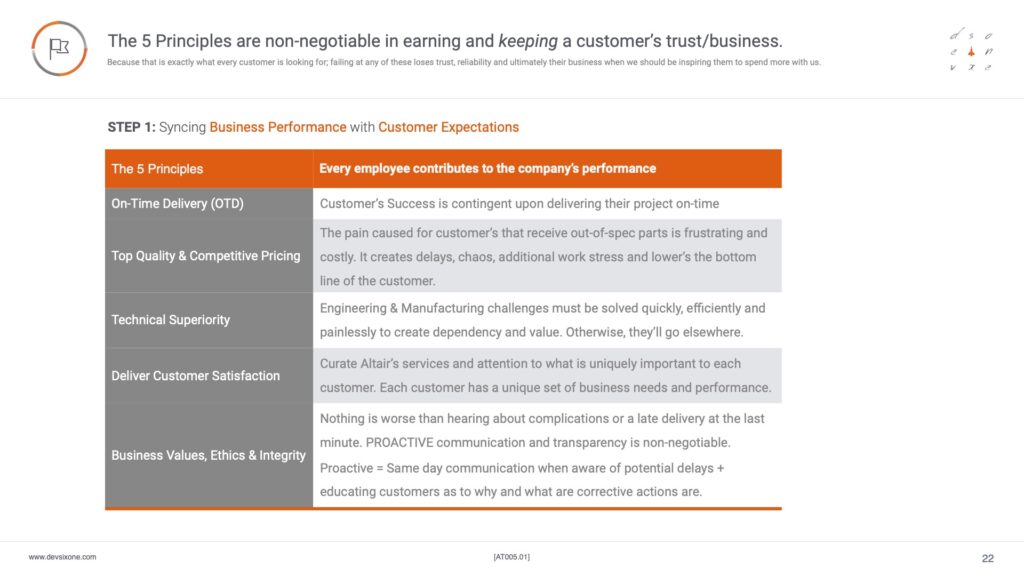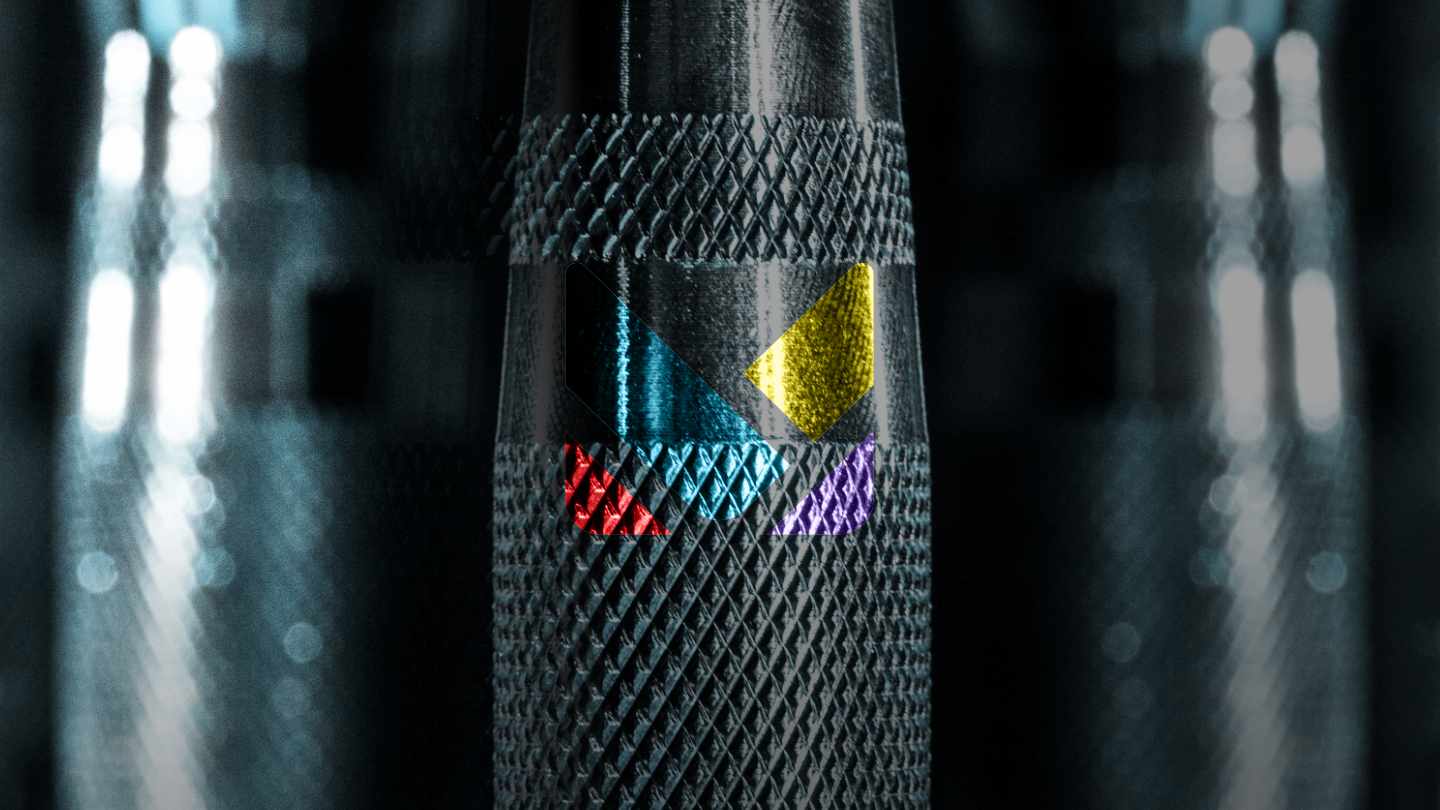
The 5 Principles of Manufacturing™
Syncing Business Performance with Customer Expectations
- On-Time Delivery (OTD)
- Customer’s Success is contingent upon delivering their project on-time.
- Top Quality & Competitive Pricing
- The pain caused for customer’s that receive out-of-spec parts is frustrating and costly. It creates delays, chaos, additional work stress and lower’s the bottom line of the customer.
- Technical Superiority
- Engineering & Manufacturing challenges must be solved quickly, efficiently and painlessly to create dependency and value; otherwise, they’ll go elsewhere.
- Deliver Customer Satisfaction
- Curate product and services to what is uniquely important to each customer. Each customer has a unique set of business needs and performance.
- Business Values, Ethics & Integrity
- Nothing is worse than hearing about complications or a late delivery at the last minute.
- PROACTIVE communication and transparency is non-negotiable.
- Proactive is equivalent to same day communication when aware of potential delays and issues.
The 5 Principles are non-negotiable in earning and keeping a customer’s trust/business. Because that is exactly what every customer is looking for; failing at any of these loses trust, reliability and ultimately their repeat business while killing all opportunities to grow the customer base. The 5 principles are deeply rooted in our knowledge and over 25 years experience in engineering, manufacturing and business. We originally came up with the concept while building a cohesive marketing plan and website for Altair. We are proud of, “The 5 Principles of Manufacturing™” and are currently in the process of trademarking it.

We are having fun with openAI, below are the results, and it’s pretty good with a focus on the customer, as it should be, however needs consolidation.
- Specification of objectives and requirements: This principle emphasizes the importance of defining the goals and requirements of the manufacturing process from the perspective of the customer. This helps ensure that the end product meets the customer’s needs and expectations, and can result in repeat orders and a growing customer base.
- Selection of production methods: The second principle involves choosing the most appropriate production methods and technologies that will result in a product that satisfies the customer’s needs. This may involve considering factors such as cost, quality, and delivery time, and making decisions that will help ensure customer satisfaction.
- Design of the production system: The third principle focuses on designing the production system in a way that will meet the needs of the customer. This may involve designing the system to be flexible and responsive to changing customer requirements, or implementing processes that allow for customization or personalization of the product.
- Management of the production process: The fourth principle involves managing the production process to ensure that it meets the needs of the customer. This may involve monitoring customer feedback and using it to make improvements to the system, or implementing processes for managing customer orders and complaints.
- Continual improvement: The fifth and final principle of manufacturing with a focus on the customer is the idea of continual improvement. This means constantly looking for ways to improve the customer experience, such as by offering new products or services, improving the quality of the product, or providing better customer support. By continuously improving the customer experience, manufacturers can build a loyal customer base and increase the likelihood of repeat orders.
We fed the AI our 5 principles and asked it to write a 500 word blogpost on it:
On-Time Delivery (OTD) is a crucial aspect of delivering high-quality products and services to customers. Ensuring that projects are completed on-time not only helps to maintain customer satisfaction, but it also allows for businesses to remain competitive and maintain their bottom line.
One of the main reasons that on-time delivery is so important is that it helps to prevent the pain and frustration that can be caused by receiving out-of-spec parts. This can create delays, chaos, and additional stress for the customer, leading to lower satisfaction and potentially even lost business. By ensuring that projects are completed on-time, businesses can avoid these negative outcomes and maintain strong relationships with their customers.
In addition to on-time delivery, it’s also important for businesses to offer top-quality products and services at competitive prices. This allows them to maintain a strong reputation and attract new customers. Offering products that are of a high-quality and meet customer specifications is crucial, as it helps to prevent issues down the line and ensures that customers are happy with their purchase.
Another key aspect of delivering customer satisfaction is having a strong focus on technical superiority. This means that businesses must be able to solve engineering and manufacturing challenges quickly, efficiently, and painlessly. By doing so, they can create value for their customers and establish a strong dependency on their products and services.
Ultimately, delivering customer satisfaction comes down to understanding what each customer’s unique needs and performance requirements are. By curating products and services to meet these specific needs, businesses can ensure that their customers are satisfied and continue to return for their products and services.
Of course, delivering on-time, high-quality products and services is only one aspect of ensuring customer satisfaction. It’s also important for businesses to operate with strong values, ethics, and integrity. This means being transparent and proactive in their communication with customers, and providing timely updates if there are potential delays or issues. By doing so, businesses can maintain trust and credibility with their customers and ensure that they continue to have successful relationships.
In conclusion, on-time delivery is an essential aspect of delivering high-quality products and services to customers. By ensuring that projects are completed on-time, businesses can prevent issues and maintain strong relationships with their customers. Additionally, by offering top-quality products at competitive prices and having a focus on technical superiority, businesses can establish a strong reputation and attract new customers. Finally, by operating with strong values, ethics, and integrity, businesses can maintain trust and credibility with their customers.
-So there it is, how to operate a healthy manufacturing business that will maintain steady growth over the years; focus on the 5 Principles, and it literally will all fall into place.





